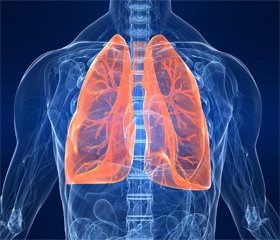Международный неврологический журнал 4 (66) 2014
Вернуться к номеру
Diagnosis and treatment of cerebral hemodynamics in patients with chronic obstructive pulmonary disease
Авторы: Kuntsevskaya I.V. - Сity hospital №1, Sevastopol
Рубрики: Неврология
Разделы: Клинические исследования
Версия для печати
Chronic obstructive pulmonary disease (COPD) are a very serious medical and social problem. This is due to the high increase in morbidity, disability and mortality in patients with COPD. Increasingly, because of the numerous clinical manifestations of COPD attributed to systemic disease. According to current views, one of the systemic manifestations of COPD is a lesion of the central nervous system. Emerging with COPD hypoxia, hypercapnia, pulmonary heart are risk factors in these patients cerebrovascular disease.
The aim of this study was to investigate changes in cerebral hemodynamics, depending on the stage of COPD.
Materials and methods. When carrying out researches we surveyed 91 patients. Middle age 62,0±4,2. To all patients conducted all-clinical and neurologic examination. State of cerebral hemodynamics were assessed by Doppler examination on the SA-8000 EX device (MEDISON). Magnetic resonance imaging was performed on General Electric CT scanner with a magnetic field at 0.2T.
Correction of venous outflow carried out by means of a preparation diosmin. The preparation was appointed in a dose of 600 mg (1 tablet) in the morning, on an empty stomach for a month. Cerebral haemo dynamics estimated before treatment.
When carrying out research all patients were divided into the following groups:
- the main group - patients with CODL I,II, the III stages. The main group was divided into 3 subgroups depending on CODL stage: The I subgroup – patients with stage CODL I (41 surveyed), the II subgroup - patients with stage CODL II (27 surveyed), the III subgroup - CODL III (23 surveyed).
- control group - 10 almost healthy people
Results. In the study of neurological status was determined mikrosimptoms. For the subjects were characterized anizorefleksiya, intention during the finger-nose test, subcortical positive signs.
When MRI in patients revealed multiple small foci giperdensivnye and moderate leukoaraiosis in the white matter of the brain, as well as the expansion of the ventricular system and subarachnoid cerebrospinal fluid spaces.
According to MRV in 81% of patients demonstrated asymmetry of the main venous collectors. According to the severity of the asymmetry of the venous sinuses of patients were divided into groups as follows: 8% of patients had mild asymmetry is detected in 17% of moderately severe asymmetry in 56% - pronounced asymmetry. In patients with severe blood flow asymmetry leukoaraiosis grade 2 occurs in 31%, whereas in patients with mild to moderate asymmetry was observed in only 0-1 steps leukoaraiosis. In the control group, the asymmetry of the venous blood flow was observed in 54% of the subjects, mostly mild to moderate degree.
When analyzing the results of indicators according to the cerebral Doppler holds significant reduction in speed performance in the test arteries, increasing the index pulse. This is evidence of the deterioration of arterial blood supply to the progression of COPD. It is also noted a significant increase in the rate of blood flow in the vein of Rosenthal, growing with the increasing severity of the underlying disease. These changes reveal a disorders of the venous outflow from the cranial cavity.
These changes have led to the appointment diosmine. After a course of treatment with diosmin patients show a significant decrease in blood flow in the vein of Rosenthal, indicating that the normalization of the venous outflow. Also, there is a growing high-speed performance on the investigated arteries, normalize the index pulse.
Conclusions.
- Against the background of the progression of COPD patients studied is a disorder of both arterial and venous circulation.
- According to MRV in the study group noted an increase in the number of patients with asymmetry of the venous blood flow, which is an indicator of impaired venous circulation. In patients with greater severity of leukoaraiosis been more pronounced asymmetry of the venous blood flow, indicating a close association of venous blood flow and structural abnormalities of the brain.
- According to a decrease in Doppler velocity parameters on the investigated arteries and cerebrovascular reserve level. The decrease of these indicators is with the growth stage of COPD.
- Patients found a violation of the venous hemodynamics, as an increase in speed performance in the vein of Rosenthal with the progression of COPD.
- Applications diosmin helps normalize both venous and arterial circulation, thereby positively affecting the cerebral hemodynamics in general.

